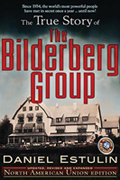ECONOMICS
OF MEGACHURCHIANITY
PART 1
By
Debra Rae
October 5, 2011
NewsWithViews.com
Church Tradition, Transition, and Transformation
“Old timers” remember with fondness the community church of yesteryear, when both the church and grammar school operated out of a single building, likewise used as a gathering place for town meetings. Portraying the spiritual life of simple folks in Walnut Grove, Minnesota, the “Little House” television series featured this homey sort of central gathering place for worship, fellowship, instruction in the Word of God, and inspiration.
Relevant biblical and extra-biblical documents suggest that, in the early decades of the church, non-apostolic Jewish Christians brought biblical faith in Christ to Rome. Following Claudius’s edict against the Jews, the church was forced to reorganize, but nonetheless maintained its common identity and Christ-centric mission.
In many ways, the late 1800s church in Walnut Grove, Minnesota mirrored the Gentile-dominated “house churches” that congregated in small groups around the city of Rome. As with the early church, quality (not quantity) mattered most; and Christ was preeminent.
Within that dynamic, the Rev. Robert Alden served his community as a caring shepherd, one who maintained meaningful personal relationships with his flock including, but not limited to, the Ingalls family, “Doc” Baker, and Nels Olesen. Times change, and so do churches—sometimes for the good, sometimes not.
Tradition via Verbal Plenary
Traditional Christian belief is unwavering when it comes to absolute truths in the Bible. Fundamentalists believe the Word of God to be unchangeable and fully inspired—i.e., “God-breathed”—as it originally was penned in Hebrew, Chaldean, Greek, and Aramaic.[1]
The Greek word in the Bible translated “church” (ekklesia) means “called out ones.” It references those who separate themselves from “the unclean thing”—physically, socially, ethically, morally, and spiritually. In distinguishing sacred from profane, these set their faces as flint in unshakable adherence to truth. By the grace of God, they live accordingly.[2] In obedience to the Great Commission, faithful followers of Christ spread the good news (“Gospel”) near and far.[3]
Naturally, doing so is likely to set a man against his father, a daughter against her mother, and a daughter-in-law against her mother-in-law.[4] That’s to be expected. However, for Church Growth Movement (CGM) statisticians, dogmatism and intolerance simply won’t do. Theirs is a numbers game, not to be jeopardized by introducing even a hint of divisiveness. Instead, many serve up a watered-down, conciliatory Gospel that bears little resemblance to traditional Christianity.[5]
Transition via Diaprax
Unlike dogmatic fundamentalists, whose ways are unacceptably narrow, enlightened churchgoers extol the broader way of tolerance by welcoming all people of faith, even if that faith is godless secular humanism, Islam, or Buddhism. Unlike the early church that unashamedly proclaimed the full Gospel to the Jew first, then the Gentile, church growth gurus repeatedly practice a carefully structured methodology of Hegelian dialectic, called diaprax.[6]
Under guidance of a trained facilitator, willing participants engage in open interchange. Nonetheless, by using group dynamics (better known as “peer pressure”), dialogue is resolutely steered to reach a pre-determined outcome—i.e., consensus—with which all feel comfortable.[7]
In
so many words, a provocative question is posed: “Hath God said?”
The carefully crafted tone for this query suggests need for a second,
more inclusive look. One that will unite, not divide.
Accordingly, fear of alienation from the group prevents one from standing
firm for his convictions. It becomes easier to rationalize that maybe
God didn’t really mean what He said. It’s certainly more
reasonable to be inclusive than exclusive, right?[8]
In this manner (thesis-antithesis-synthesis)—by means of Hegelian dialectic—“line upon line, precept upon precept” Bible study[9] is forfeited for groupthink, or collaboration. Agreement or consensus, more accurately termed compromise, prevails.
Nevertheless, unlike politically correct modernists, Christ spoke “fighin’ words” certain to stir the pot. Indeed, He characterized Pharisees as “a brood of vipers” and “white-washed tombs.” Himself a stone of stumbling and rock of offense, Christ was all about truth. His was no conciliatory Gospel.[10]
Transformation via Collaboration
Under guidance of management theory and practice, the American church over time has become super sized. This trend, of course, is consistent with Western culture; but then bigger is not always better.
As previously suggested, not biblical tradition, but diaprax guides transformation within the institutional church, well marinated in postmodern thought.[11] Today’s nonprofit (third) sector—i.e., the mega church—follows private and government sectors in implementing slick marketing ploys, public-private partnerships,[12] and faith-based initiatives[13] designed to ensure social justice.[14]
Not so much a shepherd, the senior pastor is best described as CEO of the corporation. While not its primary goal, profit is recognized as essential for a church’s continued existence. With this in view, deacons serve more as statisticians than stewards, and elders function more as board members than spiritual overseers. Congregants are relegated to the status of “human resources,” prepared and then freed to perform “for the common good.”[15]
| Subscribe to the NewsWithViews Daily News Alerts! |
Offshoots of a mother church are “plant communities” where individuals’ social needs can be met, and healthy communities can be fostered. They’re “chips off the old block” accountable more to an official hierarchy than to the inspired Word of God revealed under guidance of the Holy Spirit.
Unfortunately, many of today’s mega-churches bear little resemblance to “the little brown church in the vale” that was built in 1864 as a striking testament to traditional Christian faith. In its place are big business ventures that pool community resources to execute social programs. While social programs aren’t inherently bad, man-initiated programs too often dilute biblical Christology and divert called-out ones from their appointed mission.[16]
More to come in Part 2.
Click here for part -----> 1, 2,
Footnotes:
1.
Verbal Plenary is the biblical position that, as written in its original
language, all the Bible is fully “God-breathed”—that
is, divinely inspired—to the slightest stroke of the smallest
alphabet letter.
2.
Isaiah 50:7—And the Lord Jehovah giveth help to me; therefore,
I have not been ashamed. Therefore, I have set my face as a flint, and
I know that I am not ashamed (Young’s Literal Translation).
3.
The Great Commission—The last recorded personal instruction given
by Jesus to His disciples, the Great Commission is one of the most significant
passages in the Holy Bible. In it, Jesus called all His followers to
take specific action while on earth: "All authority has been given
to Me in heaven and on earth. Go therefore and make disciples of all
the nations, baptizing them in the name of the Father and of the Son
and of the Holy Spirit, teaching them to observe all things that I have
commanded you; and lo, I am with you always, even to the end of the
age" (Matthew 28:18-20).
4.
Matthew 10:34-35.
5.
Church Growth Movement (CGM)—A movement within evangelical Christianity
that emphasizes missionary work in combination with sociological awareness
of a targeted population. Its popular label, "seeker sensitive,"
distinguishes would-be converts as "seekers."
6.
George Hegel was a German philosopher who undermined the notion of fixed
rights or wrongs; in fact, he believed that the State itself is god.
Hegelian Dialectic (conflict resolution or the Delphi Technique) is
group consensus under peer pressure whereby ends justify the means.
7.
Consensus (agreement) involves collective thinking that prods participants
beyond moral absolutism into the ambiguous realm of “evolving
truth.” Ground rules for collaboration forbid adversarial processes;
instead, participants must find common ground. Collaboration in the
name of education reflects leadership of change agents more so than
scholarly efforts of individuals who study to show themselves approved
of God.
8.
Genesis 3:1.
9.
Isaiah 28:10.
10.
Matthew 10:34; 23:27, 33; 1 Peter 2:8.
11.
Postmodernism—A philosophical movement that questions the grand
meta-narrative (big story) as it relates to the God of the Bible, His
expressed will and ways. Apparent realities are but social constructs,
subject to change.
12.
Public-Private Partnerships pair government service with private business
ventures—i.e., the corporate church. Funding and operations require
compliance with government regulations and restrictions. While Christians
render unto Caesar his rightful due, they nonetheless give precedence
to the Higher Authority—obeying God, rather than man.
13.
Faith-based Initiatives spring from compassionate conservatism, a carefully
considered philosophy with results-driven, cost-effective, full-fledged
programs that, along with government, embrace efforts by religious groups
to address social problems associated with poverty, housing, and prisoners.
Faith-based initiatives require recipients to examine the way they live.
Because government-sponsored programs make no such demand, increased
dependency ensues. Too often, however, the slothful become “brother
to him that is a great waster” (Proverbs 18:9).
14.
Social Justice evangelicals lobby for non-proliferation, world peace,
and conflict resolution for families. They defend racial justice (if
not equality), building interfaith relations with Muslims (reciprocity
optional), International Law (trumping our US Constitution), and justice
for God’s creation (warranting human apology—even worship).
15.
Elders
and Deacons.
16.
Biblical Christology is derived from two Greek words, meaning “the
study of the person of Christ,” His deity and humanity.

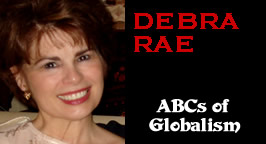
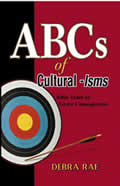
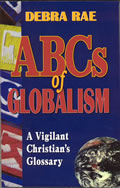

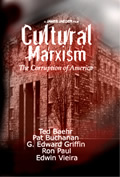
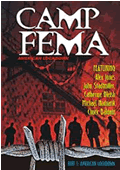





 Share
This Article
Share
This Article

